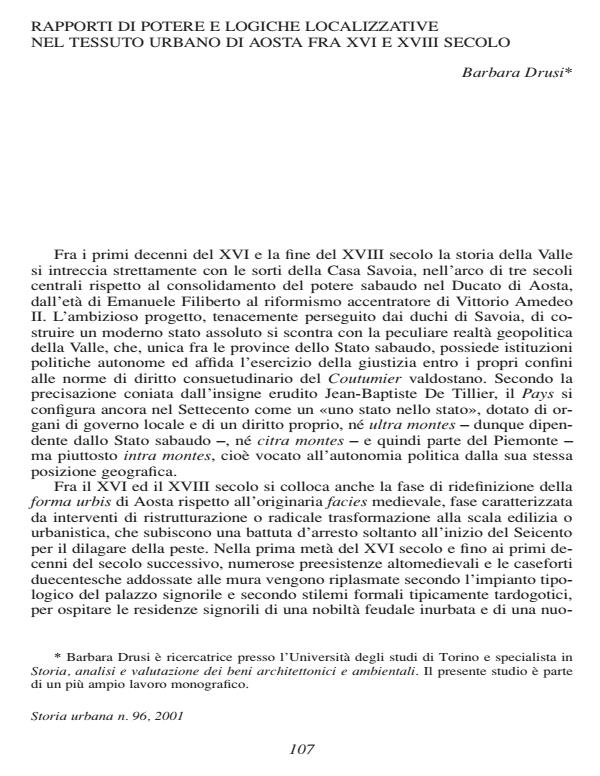Rapporti di potere e logiche localizzative nel tessuto urbano di Aosta fra XVI e XVIII secolo
Journal title STORIA URBANA
Author/s Barbara Drusi
Publishing Year 2003 Issue 2001/96
Language Italian Pages 22 P. File size 94 KB
DOI
DOI is like a bar code for intellectual property: to have more infomation
click here
Below, you can see the article first page
If you want to buy this article in PDF format, you can do it, following the instructions to buy download credits

FrancoAngeli is member of Publishers International Linking Association, Inc (PILA), a not-for-profit association which run the CrossRef service enabling links to and from online scholarly content.
Between the earliest decades of the 16th century and the end of the 18th century the historical texture of Aosta was restored or rather completely rebuilt through interventions of conversion, new building and recovery projects implying a logic of complex setting, which ought to be looked at again in the light of the social balance and power relations both within the society of Aosta and with the ducal authority. With regard to the structure of land property and the distribution of soil uses in the middle of the 18th century, both documentary sources and historical iconography essentially confirm the results arising from the analysis of the Cadastre Sarde, which dates back to 1768: a preminence, often visual, of the two main poles of ecclesiastic power, the cathedral of Notre Dame d’Aoste within the defensive walls and the Collegiate Church of S. Ours in the external Bourg, including a large urban area occupied by the monastic precincts of diverse orders of regular canons; a considerable presence, throughout the whole urban texture, of both the aristocratic and the upper-middle classes, with a prevalence of the residential and craftsman spaces within the defensive walls and of the uses of private green or agricultural green in the Bourg; a widespread presence of notaries and lawyers aiming at ennoblement; the exiguity of the mercantile class residing in Aosta.
Barbara Drusi, Rapporti di potere e logiche localizzative nel tessuto urbano di Aosta fra XVI e XVIII secolo in "STORIA URBANA " 96/2001, pp , DOI: